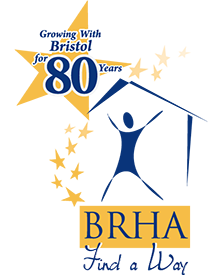In a press release this morning, HUD announced that according to its latest estimate, homelessness in the U.S. remained largely unchanged. However, homelessness among veterans and homelessness experienced by families with children declined nationwide since 2017.
As HUD’s 2018 Annual Homeless Assessment Report to Congress points out, on a single night in January 2018:
- 552,830 people were homeless representing an overall 0.3 percent increase from 2017 but a 13.2 percent decrease since 2010.
- Most homeless persons (358,363) were located in emergency shelters or transitional housing programs while 194,467 persons were unsheltered.
- The number of families with children experiencing homelessness declined 2.7 percent since 2017 and 29 percent since 2010.
- 37,878 veterans experienced homelessness, a decline of 5.4 percent (or 2,142 persons) since January 2017. The number of female veterans dropped nearly 10 percent since last year. Overall, veteran homelessness in the U.S. declined by 49 percent since 2010.
- 88,640 individuals experienced long-term homelessness in 2018, an increase of 2.2 percent over 2017 levels though chronic homelessness declined by 16.4 percent (or 17,422 persons) since 2010.
The number of unaccompanied homeless youth and children in 2018 is estimated to be 36,361, a 5.1 percent decline since 2017.
###
WASHINGTON – Homelessness in the U.S. remained largely unchanged in 2018, according to the latest national estimate by the U.S. Department of Housing and Urban Development (HUD). HUD’s 2018 Annual Homeless Assessment Report to Congress found that 552,830 persons experienced homelessness on a single night in 2018, an increase of 0.3 percent since last year. Meanwhile, homelessness among veterans fell 5.4 percent and homelessness experienced by families with children declined 2.7 percent nationwide since 2017.
As in previous years, there is significant local variation in the data reported from different parts of the country. Thirty-one (31) states and the District of Columbia reported decreases in homelessness between 2017 and 2018 while 19 states reported increases in the number of persons experiencing homelessness.
“Our state and local partners are increasingly focused on finding lasting solutions to homelessness even as they struggle against the headwinds of rising rents,” said HUD Secretary Ben Carson. “Much progress is being made and much work remains to be done but I have great hope that communities all across our nation are intent on preventing and ending homelessness.”
“Communities across the country are getting better and better at making sure that people exit homelessness quickly through Housing First approaches,” said Matthew Doherty, executive director of the U.S. Interagency Council on Homelessness. “We know, however, that a lack of housing that people can afford is the fundamental obstacle to making further progress in many communities.”

HUD’s national estimate is based upon data reported by approximately 3,000 cities and counties across the nation. Every year on a single night in January, planning agencies called ‘Continuums of Care’, along with tens of thousands of volunteers, seek to identify the number of individuals and families living in emergency shelters, transitional housing programs and in unsheltered settings. These one-night ‘snapshot’ counts, as well as full-year counts and data from other sources (U.S. Housing Survey, Department of Education), are crucial in understanding the scope of homelessness and measuring progress toward reducing it.
Read more information on state and local-level homelessness.


